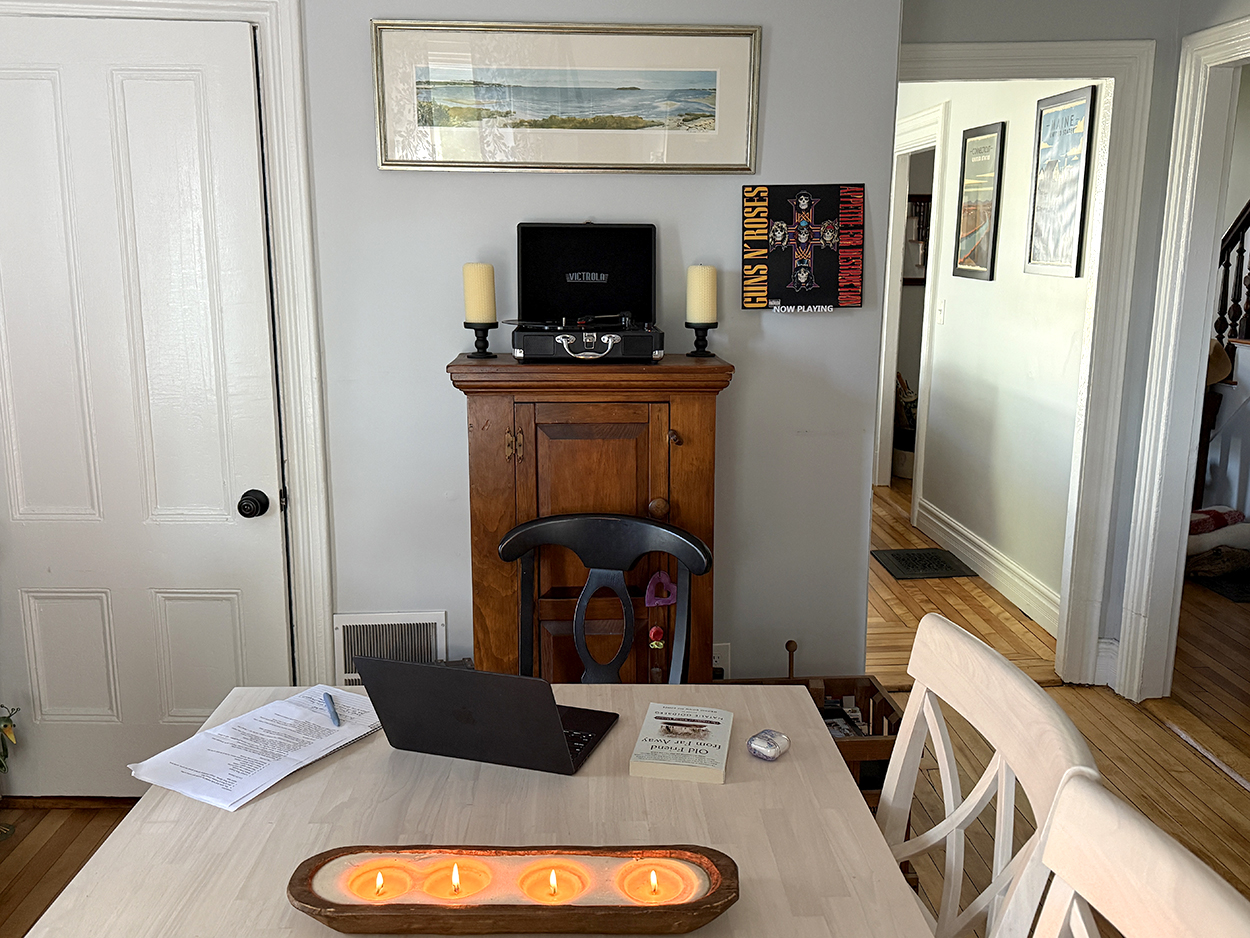Generative writing is a writing exercise where the focus is on words on a page, not the final product. This can be a powerful technique.
Where do I begin? That’s the question so many of us ask ourselves when staring at a blank page. It’s also the question that arises in conversation when we are about to recount a long and winding tale. And, in the worst times, it’s one we fail to answer — instead just staring at the blinking cursor or waving a hand to move past the tale without telling it.
Here’s the secret: There is no perfect opening.
Perfection comes not from starting at a certain turn of phrase, but from the body of the work together — the cadence of it, as it winds from the beginning to the thoughtful end. Thus, writing memoir is far from a one and done deal. It’s something to be honed, polished, tweaked, cut, rewritten and shaped. But to do that, first the writing must commence.
Teaching students how to simply start writing without worries about perfection or publishing can help with this. Aim for unlocking the creative movement of writing through generative writing by focusing on just writing for a certain amount of time. Perhaps when the emphasis is on unraveling the memories that will eventually form the memoir, each line will become a little more learned, developed and strong. You never know what you may find.
That’s something I have found with my own writing.
Memoir is recollection — the telling of true stories of a writer’s past in the context of what they know now. It’s reliving stories as they are remembered. Writing without thinking, as you do with generative writing, allows us as writers to dig deeper into memory and find the misplaced pieces.
During one grad school class, I spent four months spending 10 minutes a day writing using daily writing exercises inspired by Old Friend from Far Away by Natalie Goldberg. By the murmurs of memory in my brain, I let the words come, stepping into the past and discovering that certain friends and loves bubbled to the surface more when I let them. I found stories I hadn’t thought about in years, and moments that brought back so many emotions. Writing emotions isn’t just a powerful way to connect with readers, it’s a powerful way to tell an impactful story. It’s though that that I learned the power of generative writing.
Here’s how the technique works:
- Each day, decide on a topic or prompt. Choose one from a writing prompts list, the book Old Friend From Far Away or go with something that’s on your mind. Among my favorite general prompts is “I remember” and “I don’t remember.” Use one or the other and just go.
- Set a timer for 10 minutes. Put your phone away, tune everything else out and just write. If writing by music is something you like, put some on. And if you find myself slowing, let the words mutate in another direction. It’s strangely freeing to write with abandon, exploring memory and imagination.
- Don’t read what you wrote immediately. Giving it an hour or a day or several will let you read with fresh eyes.
- Do this every day. Don’t expect most pieces to turn into something else.
- It’s okay to revisit the same topic. I did this several times, finding the elements I most wanted to write about.
This process can open the floodgates to writing.
When I did this, some of those 10-minute pieces became the basis for things I pitched and published. Others became part of longer pieces I worked on. Others have simply unblocked my mind so that I can write more. And some showed me what I needed to explore more.
This exercise is ripe for repurposing in classes. Short timed writes open the mind. They condition writers to keep going instead of fussing over word choice, sentence structure and perfect openings. They help teach how to barrel through a writing process, leaving the editing for the next pass. And using prompts from Old Friend from Far Away (a wholly worthy book for using in classes) like “I remember” and “I don’t remember,” we can help guide students into generative writing.
Pretty powerful.
Doing this alongside exercises I already have students do, such as spending 10 minutes outside recording everything they see, feel, touch, hear and smell and then writing a descriptive paragraph, helps them zero in on the details that bring all writing — including memoir — to life.
In teaching how to write memoir, both in the shorter essay form and the longer book-length form, we must teach students how to remember — how to dig into the crevices of their minds, and tug at the threads of memory. We must guide them to letting their mind explore things from the past.
As for me, writing is my life purpose. And though I work in PR and as a college instructor, writing is what makes me feel most like myself. Writing daily means I find more things to write about, more subjects to tackle, more windows to throw open.
Speaking of which, there’s a window I need to go climb through now. A story is begging to be told.


Be First to Comment